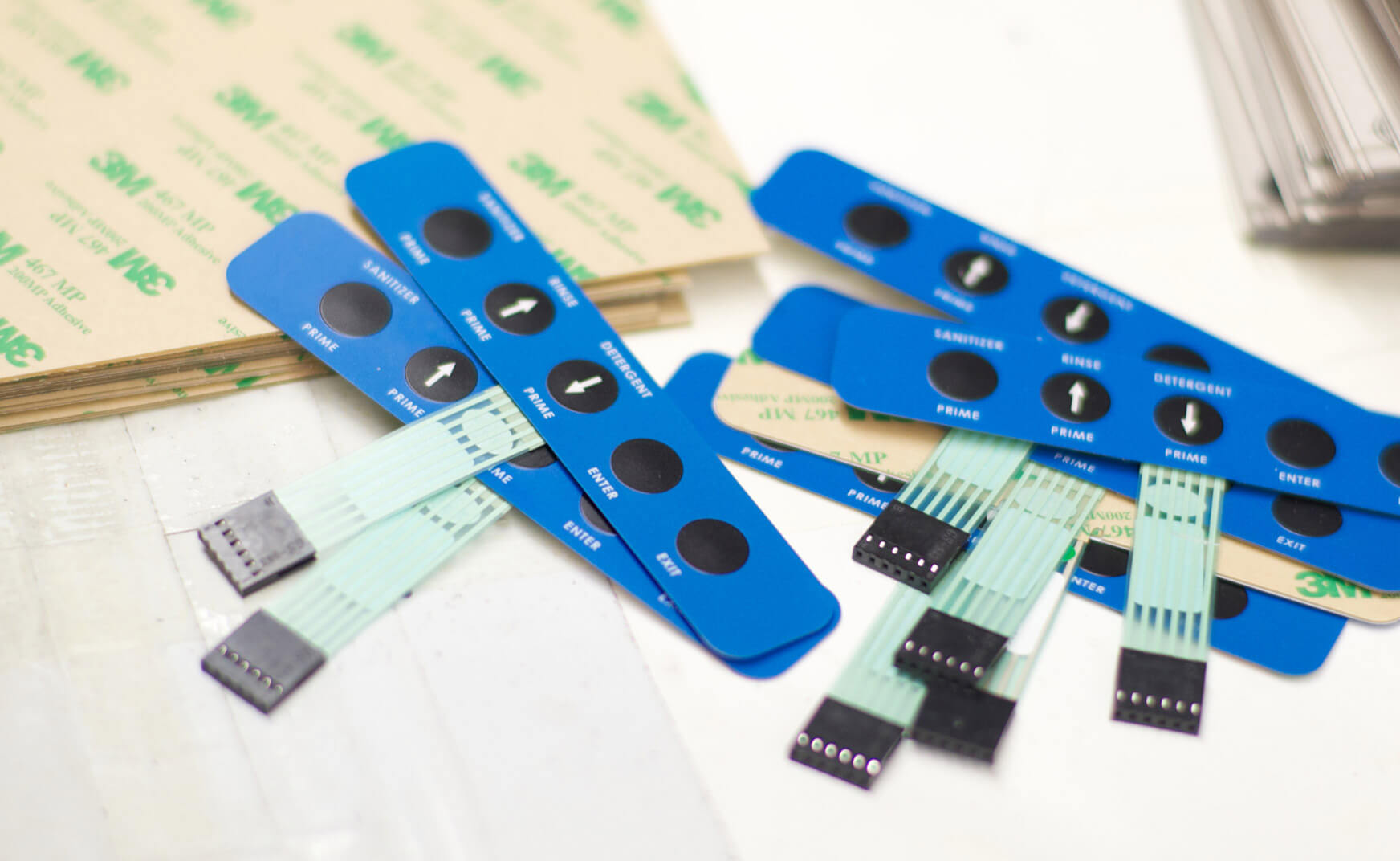The Function of a Membrane Switch in Modern Touch Interfaces and Controls
The Function of a Membrane Switch in Modern Touch Interfaces and Controls
Blog Article
How Membrane Changes Add To the Longevity of Electronic Control Panels
Membrane layer switches play an important role in enhancing the durability of digital control panels, largely via their multi-layered construction which gives reliable defense versus ecological variables such as moisture and dust. The lack of moving components considerably minimizes the probability of mechanical failures, making membrane layer changes ideal for demanding applications.
Interpretation of Membrane Layer Buttons

Membrane switches are created to be slim and lightweight, making them appropriate for applications where room is restricted. They can be produced in different shapes, sizes, and colors, providing versatility in style that fulfills aesthetic and functional requirements. Furthermore, membrane layer buttons can include various innovations, such as responsive responses and LED indications, boosting customer experience.
Due to their building, membrane switches are typically resistant to dirt, moisture, and basic wear, adding to their sturdiness popular atmospheres. Their seamless layout not only helps with easy cleaning but additionally minimizes the risk of mechanical failing, making them a recommended selection for suppliers looking for trusted interface in their digital control board.
Protection Versus Ecological Aspects
The style of membrane switches naturally gives a degree of protection versus numerous environmental elements, which is vital for keeping capability in tough conditions - Membrane Switch. These switches are generally constructed with layers of adaptable materials that secure inner elements from wetness, dirt, and impurities. By encapsulating the circuitry, membrane layer changes minimize the threat of short circuits and deterioration, which can considerably harm efficiency
Furthermore, making use of robust adhesives and sealers throughout production boosts their resistance to environmental obstacles. Membrane layer buttons can endure exposure to chemicals and solvents, making them suitable for markets such as food handling and healthcare, where health and sanitation are extremely important. Their smooth surface layout also avoids the accumulation of dust and germs, facilitating much easier cleaning and upkeep.
Temperature level changes are another environmental issue, and membrane layer switches are engineered to operate successfully across a large range of temperatures (Membrane Switch). This versatility makes certain that control panels continue to be functional in various setups, from commercial environments to customer electronic devices
Effect On Individual Communication
Customer interaction with digital control panels is significantly influenced by the style and capability of membrane layer buttons. These switches offer a responsive address user interface that enhances the overall individual experience, permitting user-friendly navigating and control. Their receptive nature makes certain that users receive immediate feedback upon activation, which is crucial for jobs requiring precision and efficiency.
Furthermore, the smooth surface of membrane layer switches over facilitates easy cleansing and upkeep, advertising user confidence in the reliability of the interface. This cleanliness is particularly crucial in settings where health is extremely important, such as clinical or food handling settings. Furthermore, the small and light-weight style of membrane switches adds to the visual allure of control board, urging individual interaction with a modern and sleek appearance.
Moreover, the assimilation of visual aspects, such as printed symbols and backlighting, helps customers promptly identify features, decreasing the discovering contour related to new equipment. Therefore, individuals can run tools better, resulting in increased performance and complete satisfaction. In summary, membrane layer switches play a pivotal duty in improving user communication by incorporating performance, looks, and simplicity of usage, eventually leading to improved functional effectiveness.
Layout Versatility and Customization
Layout flexibility and customization are crucial elements of membrane layer switches, making it possible for manufacturers to tailor electronic control board to specific applications and individual needs. This versatility permits the combination of different layout elements, such as colors, graphics, and appearances, which can enhance the aesthetic charm and individual involvement of the control panel.
Membrane layer buttons can be customized in shapes and size, fitting a variety of gadgets and applications, from commercial equipment to consumer electronic devices. This flexibility this article makes sure that manufacturers can produce user-friendly interfaces that align with individual expectations and functional needs. In addition, the capacity to integrate distinct attributes such as backlighting or responsive feedback additionally enhances usability, permitting a much more interactive experience.
In addition, the production process for membrane layer changes supports the quick prototyping of styles, allowing suppliers to repeat and improve their concepts rapidly. This ability not only speeds up the advancement timeline however also guarantees that the end product fulfills certain practical and visual requirements.

Cost-Effectiveness and Durability
Cost-effectiveness and durability are considerable benefits of membrane switches, making them an attractive option for manufacturers and end-users alike. These buttons are usually more economical to produce than traditional mechanical buttons, largely because of their simplified production procedures and the minimized number of components called for. This price advantage extends not just to preliminary production but additionally to long-lasting operational expenses, as membrane layer buttons frequently require much less maintenance and have a lower failing rate.
Moreover, the long life of membrane switches adds to their total worth. Constructed from sturdy materials, they are resistant to ecological factors such as moisture, dust, and chemicals, which can cause early wear in other button kinds. The absence of relocating parts decreases mechanical failure, allowing membrane switches over to keep capability over extended durations.
This toughness is especially beneficial in applications needing consistent efficiency under demanding conditions, such as clinical gadgets and industrial tools. Ultimately, the combination of cost-effectiveness and durability makes membrane switches over an economically practical choice for makers, providing trustworthy solutions that stand up to the examination of time while enhancing financial considerations.
Verdict
In conclusion, membrane layer buttons substantially boost the resilience of electronic control read this article panels via their durable building and construction and safety functions - Membrane Switch. In general, membrane switches stand for a trusted and cost-efficient selection for enhancing the longevity and functionality of digital control systems.
Report this page